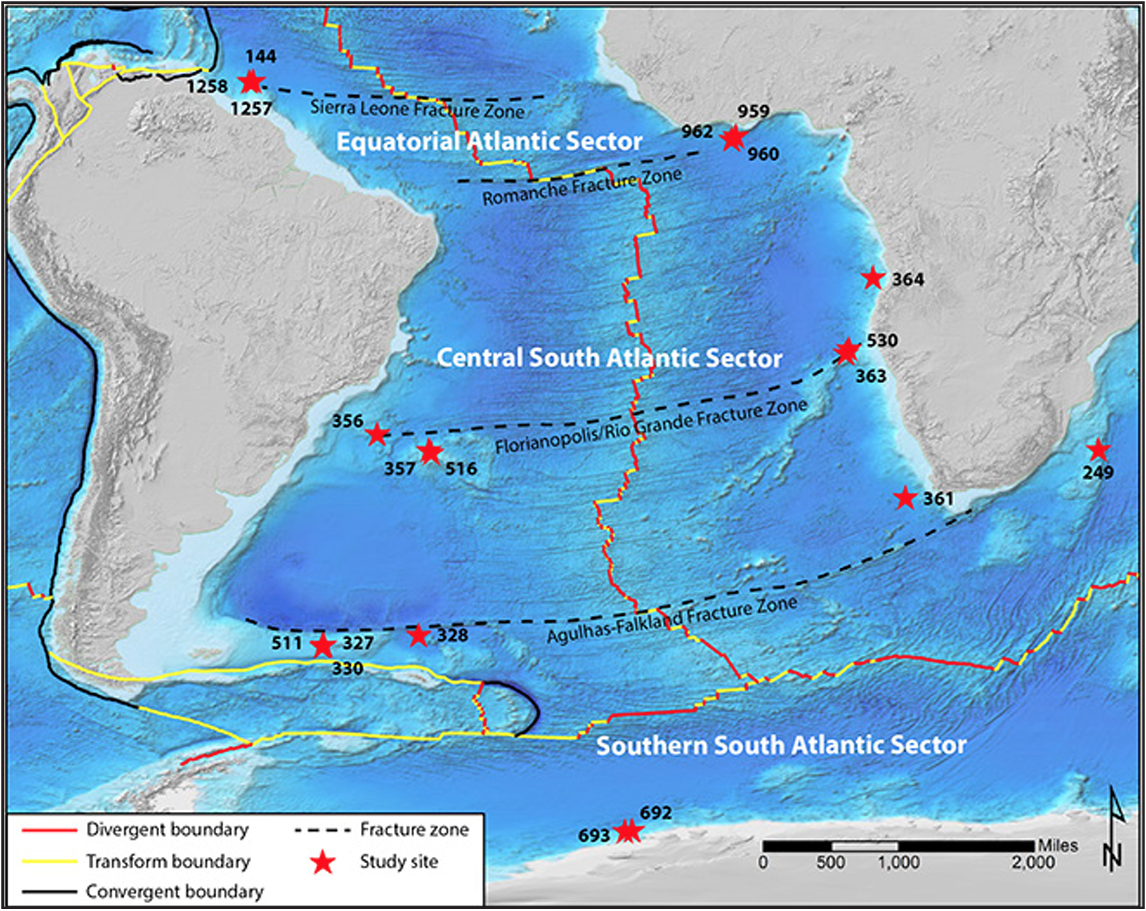EGI OCEANS –
SOUTH ATLANTIC SOURCE ROCK RECLASSIFICATION
Principal Investigator: Eiichi Setoyama, Ph.D. | Sudeep Kanungo, Ph.D.
Status: Recently Released | Immediate Delivery
- 1. Source rock characterization for richness, maturity, organofacies type and kinetics
- 2. Multi-disciplinary paleoenvironmental interpretation (foraminifera, nannofossils, organic-walled microfossils and siliceous microfossils)
- 3. Integrated paleoenvironmental and organofacies maps for identified source rock intervals 4. Gas-Oil Ratio (GOR) and Source Potential Index (SPI) ranking maps
Determination of
- Source rock potential and their associated OM end-member distribution
- Richness and quality for each chronostratigraphically delineated South Atlantic source rock interval
- Paleoenvironmental conditions controlling the deposition of source rocks
- Spatial distribution of anoxic/dysoxic conditions and organofacies type for identified source rock intervals
Palynofacies observations allow us to visually identify the main organofacies of the potential source rocks, and resolve whether Type II/Type III samples determined by pyrolysis are actually characterized by a mixture of marine and terrestrial OM (mediocre quality, oil and gas prone) or by degraded marine OM (good quality, mostly oil prone). This detailed classification and quantification of OM end-members and the correction for the mineral matrix effect will significantly improve the source rock quality evaluation. Palynofacies observations will also help reconstruct paleoenvironment including redox conditions and detrital inputs. An effort to combine the new results using paleogeographical maps to depict the distribution of potential source rocks will facilitate understanding of its evolution through time. Proven metrics such as Gas-Oil Ratio (GOR) and Source Potential Index (SPI) will be employed to rank the basins for their source rock potential.
Efforts are underway to include a few pre-salt samples for source rock evaluation from the Brazil and Gabon conjugate margins. Pertinent authorities in both countries have been approached and negotiations are in progress.
CONTACT TO PURCHASE
Eiichi Setoyama, Ph.D.| 801-585-9768 | esetoyama@egi.utah.edu
SUMMARY
A focused and tested workflow from EGI’s Central & North Atlantic research program supported by 10 major international oil companies, combining bulk geochemical data, new palynofacies observations, and bulk kinetic analyses, will be employed for a quantitative appraisal of the potential and quality of Mesozoic source rock systems delineated by the EGI Oceans South Atlantic Project (2017). Palynofacies observation enables unambiguous visual identification of organic matter (OM) type and composition, and the correction for the mineral matrix effect. Synthesizing the interpreted organic geochemistry and bio-chronostratigraphic data from the above mentioned Oceans project with new palynofacies analytical data will provide improved, higher-resolution constraining of the spatial and temporal evolution of potential source rocks along the South Atlantic conjugate margin than understood before (Figure 1). The OM-end-member-specific kinetics will provide reliable kinetic parameters, critical for quantitative modeling of hydrocarbon generation, for each potential source rock system, and thus refine the assessment of YTF resources in the South Atlantic.

Figure 1: DSDP-ODP study sites from the EGI Oceans South Atlantic Project (2017) will be used for this project.
Stay in Contact with EGI
Hours of operation
8:00 AM to 5:00 PM
Monday through Friday
Contact us
Address
Energy & Geoscience Institute
423 Wakara Way, Suite 300
Salt Lake City, UT 84108
Phone
801-581-5126
